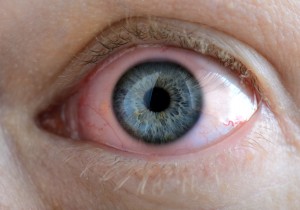27
2015
Harmful Effects of Ultraviolet Radiation on The Eyes
What are the effects of UV on the eye?
The eye occupies less than 2 per cent of the whole body surface area, but it represents the sole organ system to allow the penetration of visible light deep into the human body. During human evolution a number of mechanisms have evolved to protect this very sensitive organ against harmful effects of the sun’s rays:
The eye is recessed within the anatomy of the head and shielded well by the brow ridge, the eyebrows and the eyelashes. However, these anatomical adaptations are of limited use in UV protection under extreme conditions such as sunbed use or strong ground reflection from snow, water and sand.
Damage to the Eyes
UV rays can also damage the eyes as more than 99% of UV radiation is absorbed by the front of the eyes. Corneal damage, cataracts, and macular degeneration are all possible chronic effects from UV exposure and can ultimately lead to blindness. Melanoma, a type of skin cancer, can also develop within the eye. Intraocular melanomas are the most common ocular malignancy in whites. These melanomas originate in the uveal melanocytes, which are found the iris, ciliary body, and choroids of the eye. The annual age-adjusted incidence of non-skin melanomas is 0.7 per 100,000 persons in the U.S. of which ocular melanomas constitute 80%. The risk of intraocular melanomas is 8-fold higher in whites than blacks
Photokeratitis and photoconjunctivitis
Photokeratitis is an inflammation of the cornea, while photoconjunctivitis refers to an inflammation of the conjunctiva, the membrane that lines the inside of the eyelids and eye socket. These inflammatory reactions may be compared to a sunburn of the very sensitive skin-like tissues of the eyeball and eyelids and usually appear within a few hours of exposure. Photokeratitis and photoconjunctivitis can be very painful, however, they are reversible and do not seem to result in any long-term damage to the eye or vision.
An extreme form of photokeratitis is snow blindness. It sometimes occurs in skiers and climbers who experience extreme UV levels due to high altitude conditions and very strong ground reflection – fresh snow can reflect up to 80 per cent of incident UV radiation. These extreme UV levels kill the outer cells of the eyeball leading to blindness. Snow blindness is very painful when the dead cells are being shed. In the majority of cases new cells grow quickly and vision is restored within a few days. Very severe snow blindness may involve complications such as chronic irritations or tearing.
Cataracts
Cataracts are the leading cause of blindness in the world. Proteins in the eye’s lens unravel, tangle and accumulate pigments which cloud the lens and eventually lead to blindness. Even though cataracts appear to different degrees in most individuals as they age, they appear to be enhanced by exposure to UVB. Cataracts can be surgically removed and an artificial lens or other means of optical correction can restore vision.
Every year some 16 million people in the world suffer from blindness due to a loss of transparency in the lens. WHO estimates suggest that up to 20 per cent of cataracts may be caused by overexposure to UV radiation and are therefore avoidable.
Cancer of the eye
Current scientific evidence suggests that different forms of eye cancer may be associated with life-long exposure to the sun. Melanoma is the most frequent malignant cancer of the eyeball and sometimes requires surgical removal. A common location for basal cell carcinoma is on the eyelids.
Related Posts
Leave a comment
Recent Posts
- Vogue Sunglasses : The super stylish women
- Prada Designer Sunglasses – Prada sunglasses are definitely for the lady who loves glamour.
- Trendy Sunglasses of the Season are Over the Top
- Fashion of Oversized Sunglasses
- Tommy Hilfiger Sunglasses : Best Selling Styles
- Fendi Sunglasses – Luxury Fashion
- Some Tips to Care for Your Eyeglasses.
- Sunglasses Safe & Stylish
- Tips for Maintain Good Eye Health
- Armani Sunglasses : The Fashion Phenomenon

 An article by Lucy
An article by Lucy







